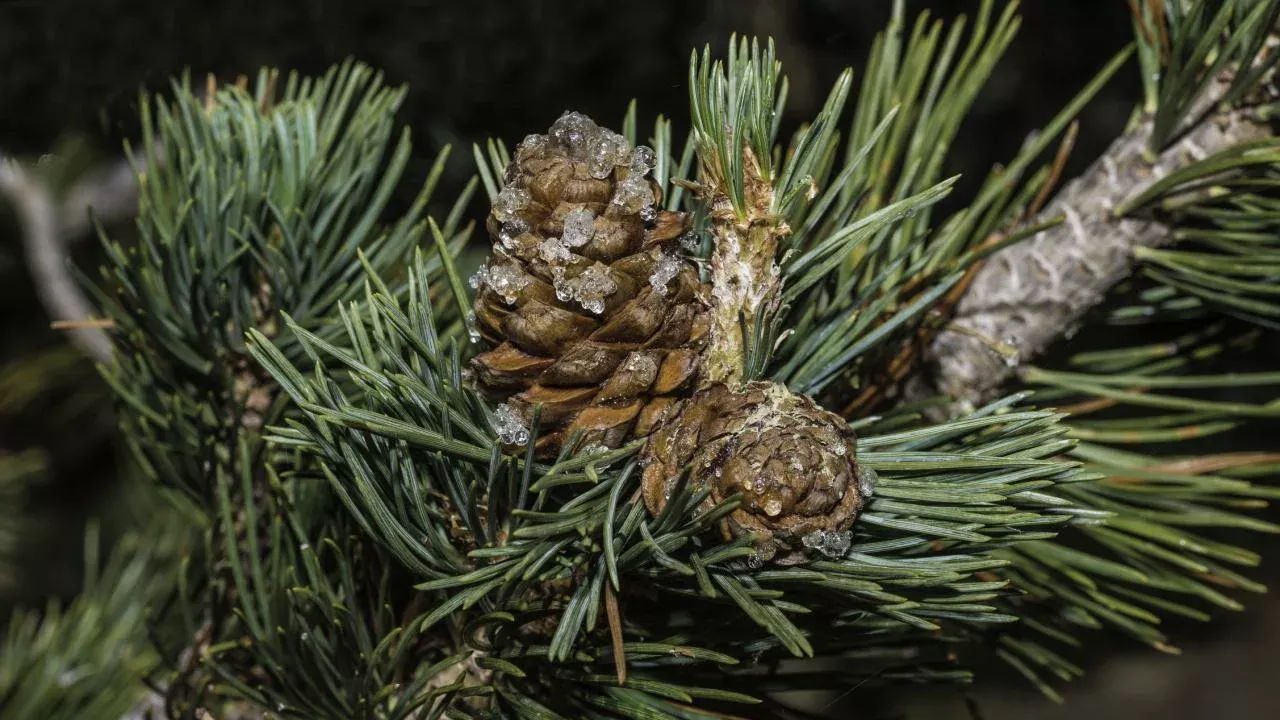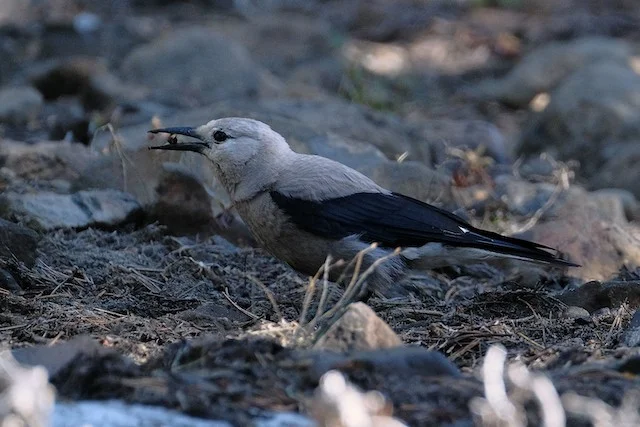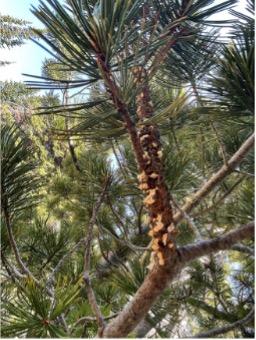
Scientists sequence genome for threatened whitebark pine
Work paves way for forest restoration

Researchers have sequenced the whitebark pine genome, presenting new opportunities to help the threatened, high-altitude tree endure environmental challenges.
“Sequencing the whitebark pine reference genome is an important scientific contribution,” said project lead David Neale, a professor emeritus in the UC Davis Department of Plant Sciences. “It is the first step in creating genomic tools that can rapidly screen trees for disease resistance and climate adaptation. With this information, researchers can expedite the supply of resistant seedlings for cost-effective restoration.”
The sequence is now accessible at TreeGenes, a forest tree genome database. A pre-print version of the scientific paper is available on bioRxiv, and it is undergoing the peer-review process.
Keystone tree in decline
In January 2023, the United States Fish and Wildlife Service listed whitebark pine as threatened under the U.S. Endangered Species Act after more than 325 million whitebark pine died due to a variety of factors. These threats include the introduced fungal pathogen white pine blister rust, mountain pine beetle outbreaks, wildfire and climate change.
The decline of whitebark pine is of huge concern: It is a keystone species across its 80.6-million-acre range in the western U.S. and Canada. Found up to the tree lines of Western mountains, whitebark pine is particularly imperiled in the Rocky Mountains, Pacific Northwest and northern Sierra Nevada.
These trees protect snowpack that helps prolong streamflow and supply critical food resources for grizzly bears and red squirrels. They also provide cultural value to Indigenous communities through spiritual significance as a resilient tree species. Whitebark pine also shares a special mutualistic relationship with the Clark’s nutcracker, the primary distributor of whitebark pine seeds.
25,000 genes ID'd in Oregon tree

Sequencing conifer genomes can be challenging because they are three to 10 times larger than the human genome. To date, the genomes of loblolly pine, Douglas fir, sugar pine, coastal redwood, giant sequoia and now, whitebark pine, all have been sequenced. The Whitebark Pine Genome Project used genetic material from a 150-year-old tree from the Deschutes National Forest near Bend, Ore., to isolate and sequence the DNA.
Researchers identified 25,362 genes and mapped 87 percent of the genetic material within the whitebark pine’s 12 pair chromosomes. These genomic findings can enhance scientists’ understanding of natural genetic resilience to blister rust, bark beetle outbreaks, drought and other climate extremes.
New restoration opportunities
With the whitebark pine genome sequencing completed, forest managers are now one step closer to developing cost-effective tools that identify genetic traits important for whitebark pine survival.
Previous methods involved identifying rust-resistant trees, collecting their cones, growing seedlings in a greenhouse for two years, conducting rust-resistance screenings on the seedlings for three years, and monitoring seedlings for up to an additional five to 10 years before planting them in the field. This process costs about $1,200 to $1,800 per tree.

Genome sequencing offers a faster, more efficient approach that could reduce costs to as little as $100 per tree and time to a matter of weeks. That is because only small amounts of needle tissue are needed to identify genes responsible for resistance to environmental threats.
The next steps include securing funding to investigate how different environmental conditions are linked to genetic variations within whitebark pine populations.
“Sequencing just one tree, as we did for the reference genome, is not enough,” Neale said. “We need to understand the genetic variation of whitebark pine to develop future genomic tools for rapid screenings and inform restoration efforts of this iconic species. We’d like to test many trees with varying resistance levels and relate this genetic diversity with the genes responsible for resistance.”
The research was done in collaboration with UC Davis, the Whitebark Pine Ecosystem Foundation, Johns Hopkins University and University of Connecticut.
Funding was provided by the U.S. Department of Agriculture Forest Service Forest Health Protection, American Forests and the Krieger Charitable Trust.
Media Resources
Media Contacts:
- Kat Kerlin, UC Davis News and Media Relations, 530-750-9195, kekerlin@ucdavis.edu
- Julee Shamhart, Whitebark Pine Ecosystem Foundation, 406-925-9545, media@whitebarkfound.org
Related article: Coast redwood and sequoia genome sequences completed
